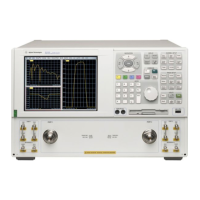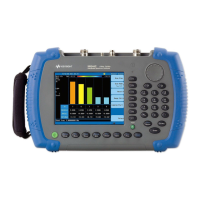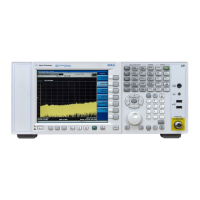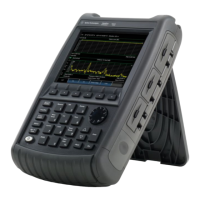Chapter 4 273
Utility and Control/Sweep Functions
Utility Functions
Utility and Control/Sweep Functions
System
Accesses instrument level features that are available in all Modes and Measurements.
These are features such as:
• External reference control
• System settings like time and date
• System/hardware information
• Input/Output interface settings
• Service information
Freq/Time Ref
Specifies the frequency reference as being internal or external. If the frequency reference
is specified as internal, the frequency of the reference is automatically identified as being
10 MHz. If the frequency reference is specified as external, you must select the frequency
of the external reference being used. If External Reference is selected, Ext Ref will appear
on the right side of the display.
The frequency of an external frequency reference is not automatically detected. If an
external frequency source is selected, the frequency of the source must be selected.
If the external reference is missing or out of range, or the frequency reference is unlocked,
the Reference frequency source indicator on the lower right of the display will indicate red.
An external frequency of ½ Hz referred to as “even second” time reference may be specified
with the value of 0.5 Hz. This is used as a CDMA reference frequency and also
synchronizes the timing of CDMA measurements.
SCPI Remarks <definite length block> data:
• A definite length block of data starts with an ASCII header
that begins with # and indicates how many additional data
points are following in the block. Suppose the header is
#512320.
• The first digit in the header (5) tells you how many additional
digits/bytes there are in the header.
• The 12320 means 12,320 data bytes follow the header.
• Divide this number of bytes by your selected data format
bytes/point, either 8 (for real 64), or 4 (for real 32). In this
example, if you are using real 64 then there are 1540 points in
the block.
SCPI Example MMEM:DATA ‘C:\DEST.TXT’,’#14abcd’ Loads the data “abcd”
into C:\DEST.TXT.
MMEM:DATA? ‘C:\SCREN001.GIF’ Initiates a transfer of data
from file C:\SCREN001.GIF.
